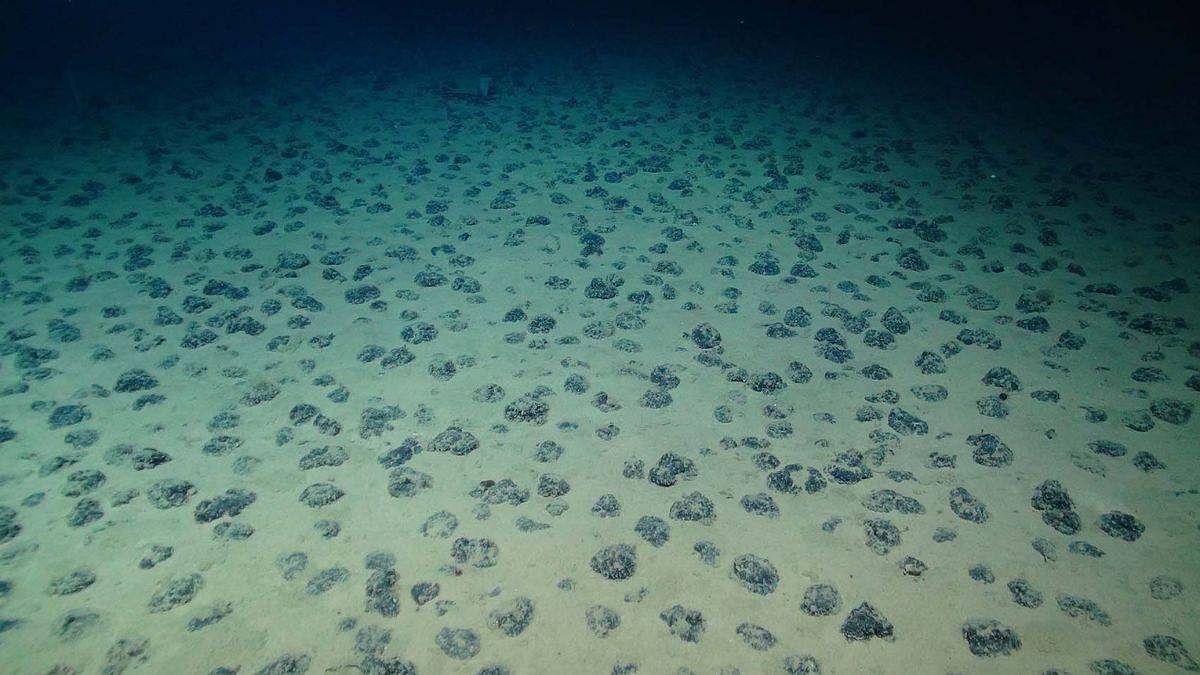New Delhi: The discovery of dark oxygen produced by “rocks” at the bottom of the ocean where the Sun doesn’t shine has scientists reassessing the origin of life.
Much of the oxygen that supports life on Earth is produced from sunlight by photosynthetic organisms such as plants and algae. It is generally understood that this is how life began.
Now, that understanding has been challenged by new evidence that oxygen can also be produced by electrolysis on the floor of the ocean, 4,000 metres below the surface, according to a study published Monday in the peer-reviewed journal Nature Geoscience.
A team of scientists led by Andrew Sweetman of the Scottish Association for Marine Science (SAMS) made the discovery on the seabed of the Clarion-Clipperton Zone of the Pacific Ocean. Specifically, they measured the electric voltage in mineral masses (called polymetallic nodules) on the seabed and found that it was high enough to split seawater into oxygen and hydrogen.
Oxygen produced in the absence of sunlight is called “dark oxygen”.
The concept of “dark oxygen” itself is not new, for there has been evidence of bacteria (Candidatus Methylomirabilis oxyfera) producing oxygen in the absence of photosynthesis, according to a 2012 study published in the journal Frontiers.
However, this is the first time that scientists have found evidence of oxygen being produced at the seafloor.
According to the researchers, the discovery calls into question how life on Earth began.
“While the presence of some microbial metabolisms that perform oxygen production without light has been known for a while, they are not usually thought to be very active on a global scale, and the phenomenon of dark oxygen production in the deep sea has not been presumed; in fact, its detection runs counter to the long-standing conventional wisdom that any oxygen that does make it to the deep sea ultimately comes from the atmosphere and photosynthesis. That doesn’t seem to be the case anymore,” Jeffrey Marlow, a biologist at Boston University and one of the authors of the study, told ThePrint over email.
Also Read: Where did Earth’s early life forms get oxygen? Scientists finally have some answers
Nodules rich in metals, have high electric charge
The team that made the discovery was sampling the seabed for the possible impact of deep-sea mining of polymetallic nodules.
While no such mining has been approved yet, the potential is being explored; these polymetallic nodules contain metals such as manganese, nickel and cobalt, which go into making lithium-ion batteries. The nodules also contain rare-earth metals.
The team found nodules to be carrying a very high electric charge. They measured the voltage, or the difference of charge between various points, and found it high enough to enable the splitting of seawater into hydrogen and oxygen by seawater electrolysis.
“When measuring the voltages on the nodule, the values were much higher than a regular rock from the street and calculations showed the measured values and the environmental conditions combined would be able to produce the observed oxygen. So yes, if the voltages reach the minimum threshold, they will always split water, unless there are additional processes we are currently unaware of,” Danielle S.W. de Jonge, a PhD student at SAMS and one of the study authors, told ThePrint.
The study, however, acknowledges that questions remain about the potential mechanism behind the electrolysis and the source of the energy driving the process.
Mining may affect seafloor ecosystems
The scientists said the dark oxygen could support seafloor ecosystems, which may be impacted if mining does take place.
Although deep-sea mining has not yet been formally approved by the International Seabed Authority, Marlow said some test mining has begun.
In the Clarion-Clipperton Zone where the new study was carried out, 19 licences (each covering 75,000 square kilometres) have been granted for initial studies on mining.
“This means that 1.4 million square kilometres are under consideration for large-scale mining, which by my quick calculations, is about one third the size of India! So yes, the potential impact would be substantial because it could occur over a very large area,” Marlow told ThePrint.
(Edited by Nida Fatima Siddiqui)
Also Read: Regulation vs taxation — what majority said in SC judgment allowing states to tax mining activity

